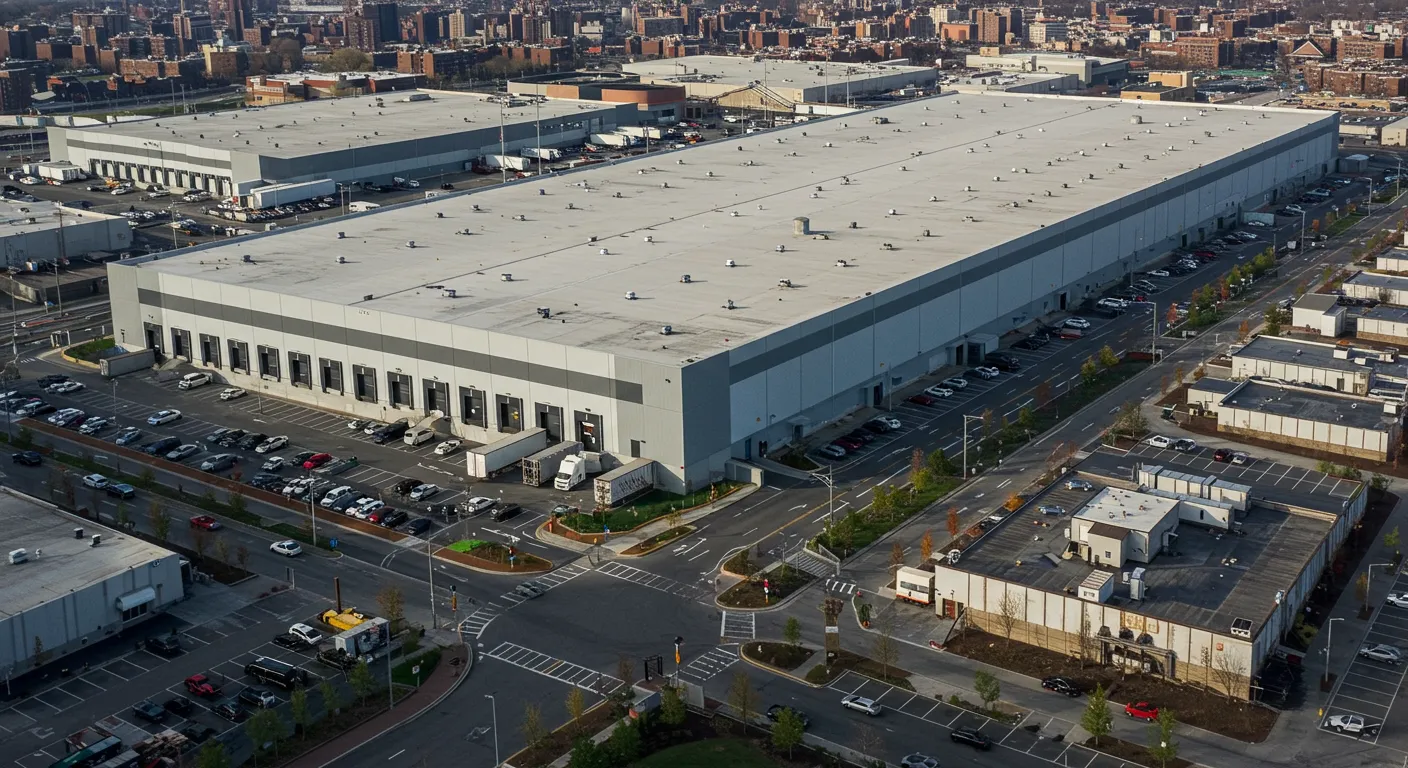Table of Contents
The landscape of distribution centers in Metro New York is evolving rapidly, driven by advances in technology, shifts in consumer demands, and growing environmental concerns. As the area becomes a hub for commerce and logistics, understanding these future trends is crucial for businesses and stakeholders looking to stay ahead of the curve. In this article, we explore the most significant trends shaping Metro NY distribution centers in the coming years.
Automation and Robotics: Revolutionizing Efficiency
One of the most significant trends in Metro NY distribution centers is the increasing reliance on automation and robotics. These technologies are transforming the way goods are stored, picked, and shipped. Automated systems such as conveyor belts, robotic arms, and autonomous vehicles are helping improve operational efficiency by speeding up processes and reducing human error.
Robotic systems are capable of handling repetitive tasks like sorting, packaging, and material handling, which traditionally required manual labor. As a result, businesses are not only seeing higher productivity rates but also experiencing reduced operational costs. The rise of automation allows employees to focus on more complex tasks, enhancing overall efficiency in distribution centers.
Sustainability and Green Logistics
With growing environmental concerns, sustainability has become a top priority in the future of Metro NY distribution centers. Companies are increasingly adopting green logistics practices to reduce their carbon footprint and promote environmental responsibility. This includes investing in energy-efficient technologies, sustainable packaging materials, and renewable energy sources.
Solar panels are becoming a common feature in distribution centers, powering operations while reducing reliance on non-renewable energy. Moreover, the use of electric vehicles (EVs) for transportation and delivery is on the rise, contributing to the reduction of carbon emissions in the supply chain. Green warehouses are not only beneficial for the environment but also align with consumer preferences, as many customers are actively seeking out brands that prioritize sustainability.
Integration of Artificial Intelligence (AI) and Data Analytics
Artificial Intelligence (AI) and data analytics are becoming integral parts of Metro NY distribution centers, providing businesses with the tools they need to optimize operations and make data-driven decisions. AI algorithms can analyze vast amounts of data to predict demand, optimize inventory, and improve supply chain management.
Incorporating AI into distribution center operations allows for smarter decision-making by leveraging real-time data to forecast trends and improve order fulfillment. Machine learning models can also help predict maintenance needs for equipment, minimizing downtime and ensuring smooth operations. The use of data analytics not only boosts efficiency but also provides valuable insights into customer behavior, helping companies better tailor their services.
The Rise of E-Commerce and Omnichannel Fulfillment
E-commerce has seen explosive growth in recent years, and this trend is expected to continue in Metro NY distribution centers. As online shopping becomes more prevalent, distribution centers are evolving to meet the demands of e-commerce businesses, which require faster and more efficient order fulfillment.
Omnichannel fulfillment has become a key focus, where distribution centers serve multiple purposes, such as fulfilling both online orders and in-store purchases. This requires advanced inventory management systems and improved coordination between online and offline channels. To keep up with consumer expectations for fast delivery, many distribution centers are implementing same-day or next-day shipping options, further enhancing the need for speed and efficiency in operations.
Labor Force Transformation
The role of human workers in Metro NY distribution centers is also undergoing a transformation. While automation is replacing many manual tasks, there is still a need for skilled labor to manage and maintain the new technologies. As a result, workers are being trained for more specialized roles that require a blend of technical expertise and traditional logistics knowledge.
Companies are investing in workforce development programs to help employees adapt to new technologies. The future workforce in distribution centers will likely consist of individuals who are proficient in robotics, AI, and data analysis. This shift is creating a demand for a new generation of logistics professionals who can work alongside robots and automation systems to optimize operations.
Real-Time Inventory Management
One of the most important trends in Metro NY distribution centers is the shift toward real-time inventory management. With the help of advanced technologies like RFID, IoT devices, and AI, companies can track the movement of products throughout the supply chain in real time. This ensures that inventory levels are always accurate and up to date, helping businesses avoid stockouts or overstocking issues.
Real-time inventory management enables businesses to respond quickly to customer demand, improving overall service levels. It also provides valuable insights into inventory turnover, allowing companies to optimize stock levels and improve cost efficiency. As Metro NY distribution centers embrace these technologies, real-time visibility will become a critical component of successful supply chain management.
Also Read: What You Need to Know About 72 sold lawsuit: A Fast-Paced Real Estate Model Under the Microscope
Smart Warehouses: The Future of Distribution Centers
Smart warehouses are quickly becoming the future of distribution centers in Metro NY. These high-tech facilities are equipped with cutting-edge technologies like the Internet of Things (IoT), sensors, and automation systems that work together to streamline operations.
Smart warehouses are designed to collect and analyze data in real time, allowing managers to make informed decisions about inventory management, staffing, and equipment usage. Sensors and IoT devices help track the location and condition of goods, providing more visibility and improving the accuracy of inventory management. As these technologies continue to evolve, smart warehouses will become more autonomous, requiring minimal human intervention to run efficiently.
Urbanization and Micro-Fulfillment Centers
As Metro NY continues to grow and urbanize, the need for smaller, more localized distribution centers is becoming increasingly important. Micro-fulfillment centers (MFCs) are small, automated warehouses located within urban areas that allow businesses to fulfill online orders more quickly and efficiently.
These centers are strategically placed closer to customers, enabling faster last-mile delivery and reducing transportation costs. Micro-fulfillment centers are particularly beneficial for e-commerce businesses that need to provide same-day or next-day delivery services. By decentralizing fulfillment, Metro NY distribution centers are becoming more agile and capable of meeting the fast-paced demands of urban consumers.
The Future of Last-Mile Delivery
Last-mile delivery, which refers to the final leg of the journey from the distribution center to the consumer, is another area seeing significant change. In Metro NY, companies are investing in advanced delivery methods such as drones, autonomous vehicles, and delivery robots to improve the efficiency of last-mile delivery.
These innovative solutions are helping reduce delivery times and lower transportation costs while providing more sustainable options. Drones, for example, can deliver packages quickly and with minimal environmental impact. As these technologies continue to evolve, last-mile delivery will become faster, more efficient, and environmentally friendly.
Final Thoughts
The future of Metro NY distribution centers is bright, with numerous technological advancements and innovative trends shaping the industry. From automation and AI to sustainability and smart warehouses, these trends are revolutionizing how goods are stored, processed, and delivered. As e-commerce continues to thrive and consumer expectations rise, distribution centers in Metro NY will need to evolve to meet these demands.
By embracing these future trends, businesses can not only improve their operational efficiency but also provide better service to customers, reducing costs and increasing competitiveness. As we look ahead, the Metro NY distribution center industry will continue to play a crucial role in the region’s economic growth and success.




